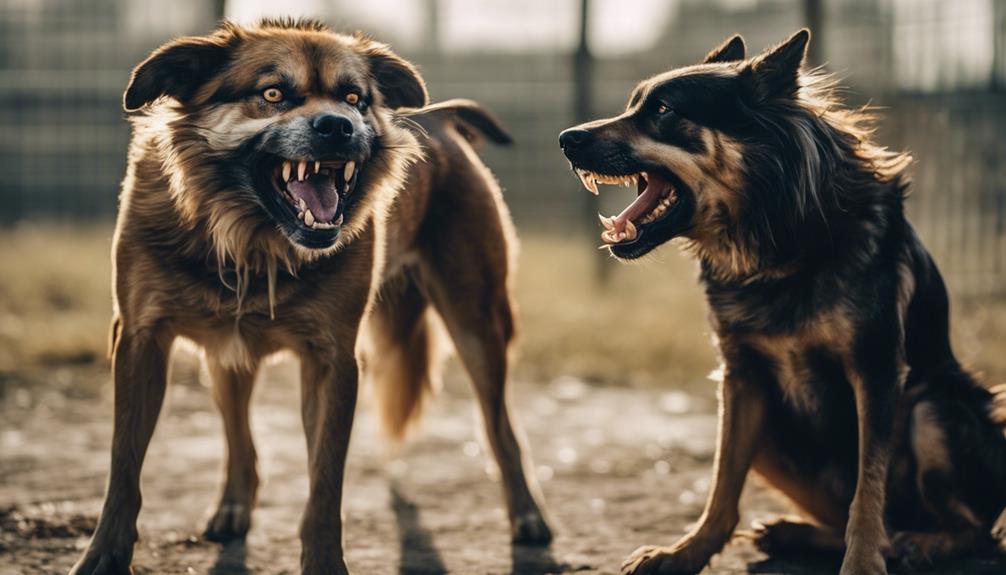Understanding canine aggression is crucial. Recognize triggers, like fear or dominance. Watch body language for signs. Socialization impacts behavior. Modify behavior with positive reinforcement. Create structured interactions. Use counter-conditioning and desensitization. Seek professional guidance for effective methods. Manage aggression with de-escalation techniques. Consider medication and therapy. Prevent aggression with proactive training. Shape behavior with reinforcement. Be consistent to reduce aggression. Ensure a safe home environment. Seeking help is vital for effective management. Ready to enhance your understanding?
Key Takeaways
- Identify triggers for aggression through observation and history.
- Recognize signs of aggression in body language and vocal cues.
- Understand different types of aggression like fear or dominance.
- Utilize positive reinforcement and structured environments for behavior modification.
- Seek professional help for tailored strategies in managing aggression effectively.
Canine Aggression: An Overview

When observing canine aggression, it's essential to understand the underlying factors that contribute to this behavior in dogs. Aggression in dogs can stem from various causes, including fear, territoriality, possessiveness, or even learned behavior. Effective aggression management strategies involve identifying the specific triggers for aggressive responses and implementing behavioral modification techniques to address them.
Behavioral modification plays a crucial role in managing canine aggression. By employing positive reinforcement techniques, such as reward-based training, dogs can learn alternative behaviors to replace aggression. It's important to create a structured environment that promotes positive interactions and reduces stressors that may lead to aggressive outbursts.
Understanding the root causes of aggression in dogs is fundamental to implementing successful aggression management strategies. By addressing these underlying factors through behavioral modification, pet owners can help their dogs develop healthier responses to challenging situations. Remember, with patience, consistency, and appropriate training, most forms of canine aggression can be effectively managed and improved.
Types of Aggressive Behavior
To further understand dog aggression, it's important to differentiate and recognize the various types of aggressive behavior exhibited by canines. Dogs may display aggression for various reasons, with dominance and fear being common types of aggressive behavior. Understanding these aggression types can help in addressing and managing your dog's behavior effectively.
